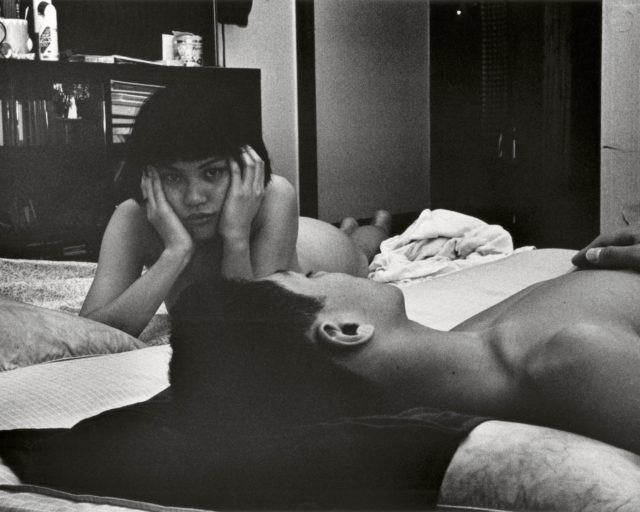Learning to See: Photography at Black Mountain College
How a small, liberal-arts college became a birthplace of modern photography.
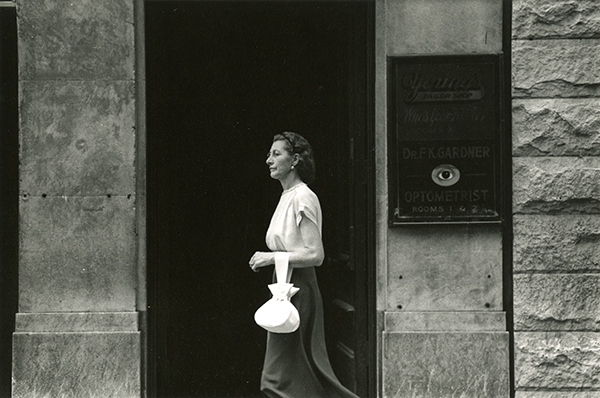
Harry Callahan, Asheville, North Carolina, 1951, 1951
© the Estate of Harry Callahan and courtesy Pace/MacGill Gallery, New York
The impact of Black Mountain College on the history of twentieth-century arts is still coming to light. A small, liberal-arts institution that ran from 1933 to 1957 in rural North Carolina, the school brought some of the most inventive minds of a generation—including European intellectuals fleeing the ravages of World War II—into contact with an intrepid student body that was ready to change the cultural gears of history.
The backbone of Black Mountain’s curriculum was the arts program, famously shaped and directed by Josef Albers from 1933 to 1949. Before coming to America, Albers had studied and taught at the Bauhaus, where he developed an understanding of Werklehre—the noble, “handicraft” aspect of art. He brought this pragmatic approach to his teachings at Black Mountain College. While at the Bauhaus, Albers created a series of semi-experimental photocollages (a selection of them is currently on view at New York’s Museum of Modern Art). His interest in photography as an art and as a mode of seeing continued upon his move to the States. “Photography,” Albers once observed, “is still a child among the crafts”; indeed, its newness might well have been part of the medium’s allure for him.
Albers’s foundational classes at Black Mountain were by many accounts transformative. One of his students, Hazel-Frieda Larsen (later Archer), joined the school’s faculty in 1949 as the first full-time instructor in photography. Among her students, in turn, were several who would go on to become fixtures in the pantheon of American modernism: Robert Rauschenberg, Cy Twombly, and Stan VanDerBeek among them. Numerous photographic luminaries had teaching stints at the college, including Harry Callahan, Barbara Morgan, Beaumont Newhall, Arthur Siegel, and Aaron Siskind. The school’s focus on open learning processes led to intertwinings of disciplines and media; students of photography might well also be students of mathematics, poetry, architecture, weaving, or any number of other subjects and skills.
Although there is much ongoing scholarship and curatorial interest in Black Mountain College, the teaching and practice of photography at the school has received surprisingly little attention. Begin to See: The Photographers of Black Mountain College, curated by Julie J. Thomson for the Black Mountain College Museum + Arts Center, is in fact the first survey exhibition of the school’s photography. The show includes images by students and teachers across the history of the school, from snapshots of the campus to portraits to experimental abstractions, as well as a trove of fascinating archival materials. Begin to See is accompanied by a catalog with informative essays by Thomson and by Michael Beggs, former researcher at the Josef and Anni Albers Foundation. I spoke with Thomson shortly after the opening of the exhibition.
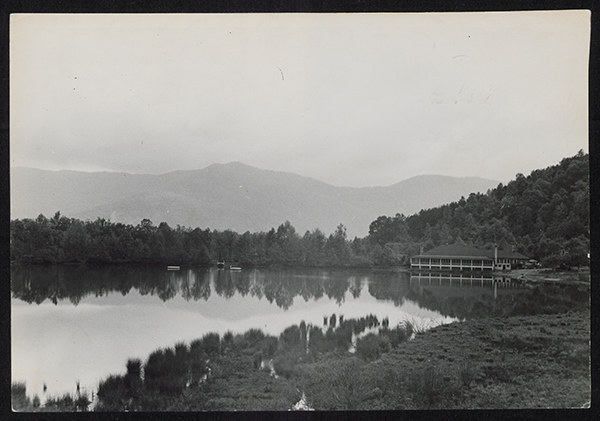
Will Hamlin, Dining Hall and Lake Eden, n.d.
Courtesy the Martin Duberman Collection, Western Regional Archives, State Archives of North Carolina and Christopher Hamlin
Diana C. Stoll: Under the initial guidance of Josef Albers, Black Mountain College emphasized the skill of seeing, starting at the most primary levels: color, form, matière (Albers’s term for textural and material interaction—a centerpiece of his instruction). Were all the school’s students exposed to these ideas?
Julie J. Thomson: The cultivation of seeing, and exercises that created the conditions for the development of seeing, were central to Josef Albers’s teaching.
Black Mountain College was a liberal arts school that placed the arts—visual art, drama, music, and dance—at the center of the curriculum. That didn’t mean that everyone was required to take art courses, although many did. The faculty and visiting artists gave evening lectures, which were well attended. Faculty members and their spouses could also attend classes, and even those who didn’t might hear about them during meal times. So there were many ways people were exposed to the ideas circulating.
The title of the exhibition was inspired by a description of Black Mountain College’s summer 1951 session, which focused on photography. It says: “The world is open wide to the photographer who can see. And one can never be bored if one can see.” This statement was one of many things that made me want to know more about photography at Black Mountain College.

Jonathan Williams, Beauty and the Beast: Joel Oppenheimer and Francine du Plessix Gray, Black Mountain College, 1951
Courtesy Yale Collection of American Literature, Beinecke Rare Books and Manuscript Collection and Thomas Meyer
DCS: What role specifically did photography play in the drive toward visual intelligence at Black Mountain?
JJT: Seeing something and seeing it through a camera are different experiences. Photography offered a different way into seeing and learning to see. In his 1943 lecture “Photos as Photography and Photos as Art,” Albers spoke about how the camera sees differently than our eyes, and showed at least one example of how a camera flattens space. I think that many of the individuals who made photographs at Black Mountain College built on what they had learned about design and seeing (in Albers’s and Larsen’s classes) while experimenting with how the camera sees things too.
DCS: How was the photography curriculum formed at Black Mountain College—and how did it evolve over the years?
JJT: Photography began as an informal workshop in the 1930s, primarily with Albers offering students feedback. Early on, other photographers were invited to visit and give lectures or instruction, photograph the college, and sometimes show their photographs. In the late 1930s Black Mountain students—including John Stix and Claude Stoller—brought darkroom equipment and some knowledge of photography to the school; it seems that this helped lead to the formation of a photo study group. For other students, the opportunity to have conversations about photography, to borrow a camera, or to have access to a darkroom allowed them to discover, explore, and cultivate this interest.
It’s worth mentioning that Albers’s matière studies also had a relationship to photography: many of those materials were ephemeral, and so were documented with photographs.
In 1942 Albers wrote a letter to the editor at U.S. Camera magazine: he was soliciting work from photographers, but he was also letting readers know that photography was taught at Black Mountain College and that photography was considered part of the arts at the school. It was something he wanted a broader audience to know they were doing and teaching.
Then in 1943 at Black Mountain College, Albers gave the lecture “Photos as Photography and Photos as Art,” the most substantive record of his thoughts on photography, and his only lecture on the subject. Following that, starting in 1944, photography courses begin to be offered during the summer sessions.
In the summer of 1949 Hazel Larsen taught photography as a tutor, and that fall she was appointed to the faculty as the first regular photography instructor. The following year, she and four of her students produced Five Photographers [a booklet featuring photographs and statements by each of them]. Like Albers, Larsen was interested in cultivating students’ ability to see, to be attentive to what was around them. According to accounts from her students, she was an inspiring teacher—some even spoke of her teaching as spiritual.
DCS: You’ve divided Begin to See into sections: “Available Light,” “Performing for the Camera,” “Bearing Witness,” “Place,” and “Experimentation.” How did you shape these categories?
JJT: Of course, many of the photographs that I’ve selected could be viewed in more than one of the sections I’ve identified. I’m suggesting these themes—some of which are self-explanatory—as ways to look at these photographs, but I am wary of labeling them too strictly, because labels sometimes are limiting, and cause us to stop looking.
I see the photographs in “Performing for the Camera” as collaborations between photographer and subject. Jonathan Williams made a number of memorable portraits at Black Mountain that might fall in this category, including his 1951 image of fellow students Joel Oppenheimer and Francine du Plessix (later Gray). Oppenheimer bares his teeth at the camera and looks like he’s about to pounce, while du Plessix stands elegantly statuesque in the background with a sneer signaling disgust. It has become one of the iconic photographs of Black Mountain College. The “Place” images reveal photographers seeing and experiencing places in a way that allowed them to see and experience the larger world, and allowing us to see it through them. A wonderful example in the show is Harry Callahan’s 1951 Asheville, North Carolina. Callahan had photographed people walking on city streets starting in 1943 in Detroit, and would return to this theme throughout his life. When he came to Black Mountain to teach in the summer of 1951, he ventured into downtown Asheville, where he made a photograph of a woman walking in front of a door. The ovals of her bag, eyeglasses, and the optometrist’s sign echo one another; the folds of her skirt add to the sense of her being in motion. The composition is remarkable.
DCS: There’s an interesting overlap between Black Mountain College and the founding of Aperture in 1952.
JTT: There is. Aperture’s founding statement envisions a forum in which to communicate about photography and to share experiences. This was also the type of space Black Mountain College provided for photography and photographers.
Four of Aperture’s founders had connections to Black Mountain College. Barbara Morgan and Beaumont Newhall were invited to teach, and Nancy Newhall came with Beaumont; she provided photographic advice and worked with students. Dora “Dody” Harrison (Warren, later Weston Thompson), another of the founders, was a student in the 1940s. While her practice of photography began after her time at Black Mountain, she later acknowledged Albers’s classes as influential.
Beaumont Newhall lectured about the history of photography during the three summers he and Nancy were at Black Mountain College (1946, ’47, ’48); in 1947 he also taught a technical course in photography. Black Mountain gave Newhall his first experiences teaching at the college level. In 1947 and 1948, he was revising his 1938 book on the history of photography into what would become The History of Photography from 1839 to the Present Day (published by MoMA in 1949). So the Black Mountain College community was one of the early audiences for his approach in that revised edition.
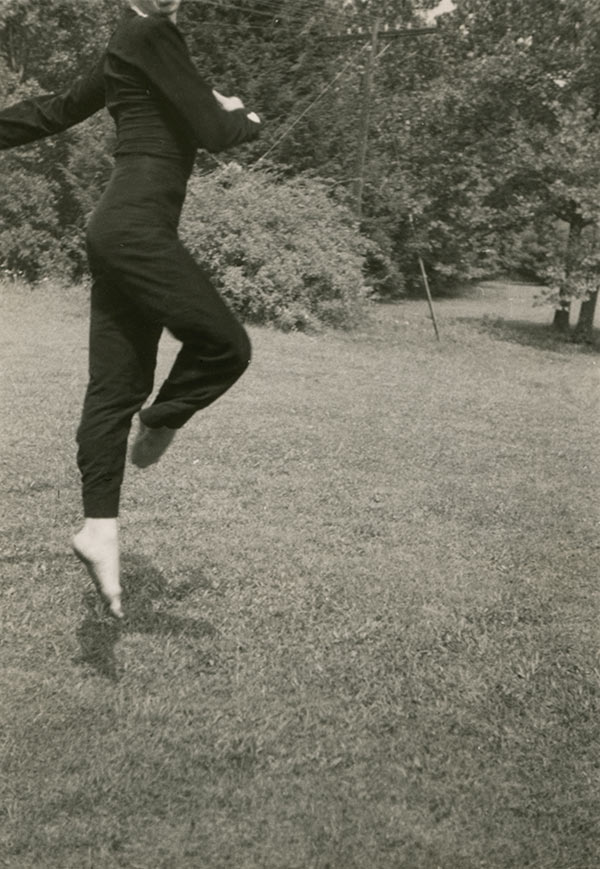
Hazel Larsen Archer, Merce Cunningham, n.d.
© Estate of Hazel Larsen Archer and courtesy the Black Mountain College Museum + Arts Center
DCS: We can’t talk about Black Mountain College without mentioning the summer of 1948, a synchronous gathering of creators, including John Cage, Merce Cunningham, Buckminster Fuller, Willem and Elaine de Kooning, the Newhalls; and among the students: Ruth Asawa, Ray Johnson, Kenneth Noland, Arthur Penn, and Kenneth Snelson. Who was taking pictures that summer?
JJT: Each semester at Black Mountain College was different due to the people who were there, both faculty and students. In the summer of 1948, photographs were made by Albers, Larsen, Trude Guermonprez, Clemens Kalischer, the Newhalls, and Kenneth Snelson, among others. Rudy Burckhardt visited that summer also, at the encouragement of the de Koonings, and showed his city movies.
Sadly, there was a fire in the darkroom that September, and many of Larsen’s negatives were destroyed.
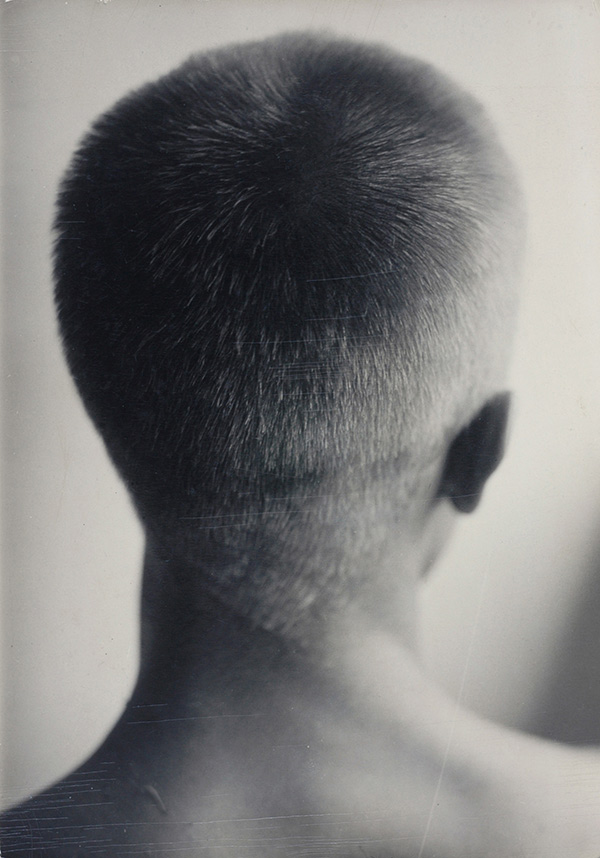
Hazel Larsen Archer, Ray Johnson (back of head), ca. 1947–48
© the Estate of Hazel Larsen Archer and courtesy Black Mountain College Museum + Arts Center
DCS: Black Mountain College’s existence spanned World War II, and many of the school’s teachers (including Josef and Anni Albers) had fled Europe to the relative safety of rural North Carolina. In 1944—at the height of the conflict—visiting photographer Josef Breitenbach addressed the students, saying: “Photography is showing us the world in all its facets, conveying the insight necessary to understand our time.” Were there ways in which Black Mountain students contended with the politics of their time through photography?
JJT: People at Black Mountain College were very aware of political events—particularly those faculty members who had left Europe due to the Nazis. The school’s approach was deeply invested in the idea of democracy and democratic procedures. John Dewey himself said: “Black Mountain is a living example of democracy in action.” The faculty was interested in creating citizens and open minds that would engage with the world. I see this as leading toward a personal politics for individuals.
The beliefs and ideals formed while at Black Mountain College became part of the individual visions of the photographers, but perhaps in a more abstract than a directly illustrative way. In the Begin to See catalog, I discuss the concept of the “personal vision” of a photographer, which was something that both Albers and Breitenbach spoke about at Black Mountain College. It was this idea of achieving a personal vision that Albers used as a way to discuss photography reaching the level of art. This personal vision, combined with the camera as a way to experience the world, can lead to remarkable photographs.
Diana C. Stoll contributes regularly to Aperture Online. She edits books for Aperture, the Museum of Modern Art, and other cultural institutions, and is the co-author of The Desert and the Cities Sing (Chronicle Books, 2016).
Begin to See: The Photographers of Black Mountain College is on view at the Black Mountain College Museum + Arts Center, Asheville, North Carolina, until May 20, 2017.












